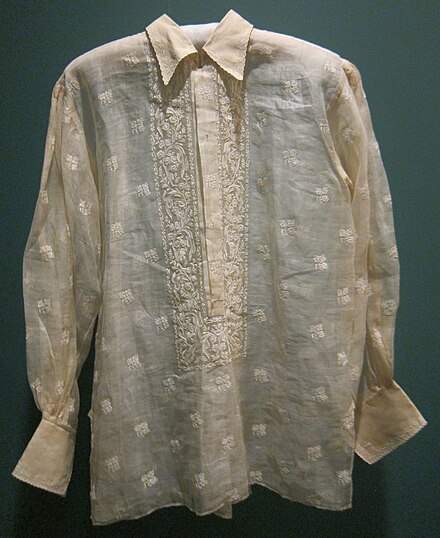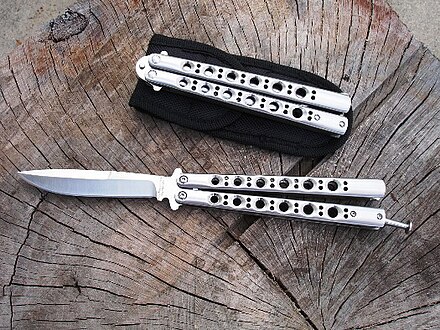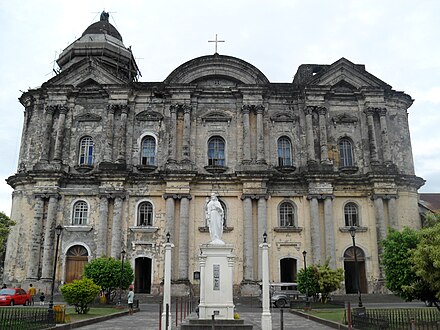Taal - municipality of the Philippines in the province of Batangas
Taal is a municipality of 61,000 people (2020) in Batangas. The old downtown (Poblacion) is noted for its Spanish colonial architecture, creating a feeling of nostalgia for the Spanish-era Philippines. The municipality's poblacion (downtown) is designated as a National Historical Landmark by the Philippine government.
Being about a two-hour drive from Metro Manila, Taal is an easy getaway from the concrete jungle and chaos there, a much closer alternative to the better-known heritage town Vigan. There are many tourist-oriented businesses; you may find a heritage house with a cafe or a bed and breakfast in it. Even the 7-Eleven store near the basilica is built in colonial-style architecture to blend with the surroundings.
Taal is just across a small river from the larger town of Lemery. Most of Taal, including the downtown, is inland on higher ground to the southeast, but Butong barangay is along the coast south of Lemery.
Understand

This page also covers the smaller municipality of San Nicolas. The original Spanish town — founded by Augustinian friars in 1572 and the original capital of Batangas, then called Bonbon — was in that area and was destroyed by the 1755 eruption of Taal Volcano. After that, the capital was moved to what is now Batangas City, and a new town of Taal built near the Our Lady of Caysasay Shrine. The nearby municipality of San Nicolas was formed out of the northernmost barrios (present-day barangay) of Taal, on the south shores of Taal Lake.
Orientation
The downtown (Poblacion) area contains the historic landmarks, the major public market, and the town hall.
-
Pansipit Bridge, 13.8779°, 120.9175°. Connects Taal and Lemery. The Taal-Lemery Bypass or Diversion Road runs along the hypoteneuse of an approximately right triangle where one of the other sides goes through downtown Taal and the third side through downtown Lemery. It is a developing area, with hotels and residential subdivisions. It also has a large new hospital; Lemery has others but Taal does not.
-
Flying V, 13.8832°, 120.9445°. The intersection where the bypass swings off the main highway which leads from Taal toward Lipa and Batangas City. It is called "Flying V" even in Tagalog; that is the brand name of the gas station on the corner. People arriving by bus and bound for Taal usually get off at this intersection and take a tricycle into Taal; there are usually several trikes waiting. People bound for Lemery stay on the bus since the terminals are in Lemery. Along the highway between downtown Taal and Flying V are most of the balisong knife manufacturers. That area also has several new subdivisions.
Climate
Taal has a dry season between November and April, with precipitation for the rest of the year.
Get in
Travel from Manila to Taal takes about two hours, or longer depending on traffic conditions. By car the usual route is taking STAR Tollway, exit to Jose P. Laurel Highway (Route 4) in Lipa, then follow the highway between Lipa and Santa Teresita (Route 433) and Route 436. Alternately, travel via Tagaytay on the Diokno Highway, then Route 436 to reach Taal. However that route is not for the faint of heart; the Diokno Highway is scenic, but also dangerous due to many ravines, some of them not protected by guard rails, and the narrow winding road.
From Batangas City, there is a direct highway (Route 436), about an hour's travel.
There are many buses that go to Lemery, where one can easily get a tricycle to Taal; see Lemery#Get in for further info and listings. Some bus and jeepney routes (e.g. from Lipa) pass through Taal. Others take the Diversion Road and can drop you at the Flying V intersection where that branches off from the highway that goes into downtown Taal; tricycles are usually available at that intersection.
Get around
The heritage town area of Taal follows a rough grid plan, typical in Spanish-era town centers, characterized by narrow streets intended for foot and animal traffic. Some streets maintain the cobblestone pavement, where others have been repaved as concrete roads. Most visitor destinations in Taal can be reached by walking.
Tricycles operate in the heritage town, and throughout the rest of Taal and Lemery. Fares generally run , depending mainly on distance but also on bargaining.
Jeepney (mainly on Lemery-Lipa or Lemery-Batangas routes) pass through the town and provide a cheaper way to reach destinations on major roads. For example, a tricycle between downtown and the Food Streat will cost but jeepney is per person. If you are going into Lemery, a jeepney () will get you into the town but you will likely need a tricycle (perhaps ) to get to your final destination; it is easier to just get a tricycle all the way (around , though they may ask for ).
See
Churches
- Taal Basilica (Basilica Minor of St. Martin of Tours), 13.8804°, 120.924°. A fine old church built in Spanish times to replace an earlier one destroyed by a volcanic eruption. The front has a neoclassical facade with lots of columns; the back of the building has high windowless stone walls and looks more like a medieval European fortress than a church. A sign in front of it says it is the largest Catholic church in Asia.
- Shrine of Our Lady of Caysasay. A pilgrimage site just north of the heritage town. It is on a low ground; one can descend to it from the historical center city over the with a flight of 125 steps (San Lorenzo Ruiz Steps). As of December 2022, the church building is closed for repairs, and services are conducted outdoors. 2022-12-03
Heritage houses
Taal has many houses built in the bahay na bato architectural style; most are ancestral homes for prominent families. Some well-known ancestral houses:
- Agoncillo Ancestral House, Calle Marcela Agoncillo. The birthplace of Marcela N. Agoncillo who was known as the maker of the first official Filipino Flag during the Philippine revolution against the Spanish authorities. The different flags of the revolution are also prominently displayed at the site.
- Apacible Ancestral Houses
- Goco House
- Ylagan-De la Rosa Ancestral House
- Casa Villavicencio, Calle Gliceria Marella, 13.88030°, 120.92113°. Heritage home owned by Gliceria Marella Villavicencio's family, and a site of a meeting of the La Liga Filipina with Jose Rizal and Andres Bonifacio. 2019-01-06
Museums and galleries
- Galleria Taal, Calle Marcela Mariño Agoncillo, 13.8794127°, 120.9199691°. 8AM-8PM. Heritage home, turned to a museum with exhibits of old photographs of the Philippines, and vintage cameras 2018-11-24 There is also a motorcycle museum in nearby Lemery.
Do
Festivals
- El Pasubat Festival - from the abbreviation of Taal's local products, namely empanada, longganisa, panutsa, suman, Barong Tagalog, balisong, tapa, tamales, tawilis, and tulingan, this annual festival, during April, showcases the local industries of the town.
- Feast of St. Martin of Tours - Religious observance dedicated to the town's patron saint, Saint Martin of Tours, November 11th. Celebrations begin at the Taal Basilica, where children recite poems and images of St. Martin are presented. Horse-drawn carriage racing is done at the lakefront of San Nicolas, where racers from parts of Luzon participate. A candlelight procession is held at night, where the images of St. Martin are paraded through the old downtown.
Beaches
While the entire waterfront of Taal (mostly lying within the Barangay of Butong) is described as a "beach" (at least, most seaside accommodations have the words "beach resort" in their names), most of it is not actually swimmable, because the water is very shallow most of the day. During the low tide, if so inclined, you can walk into the ocean for hundreds of meters, among coconut-sized and boulder-sized corals, and it won't get any deeper than knee depth.
One swimmable section of Taal's beach is some 100-200 meters south of the Church of St Peter (aka the Butong Parish Church, or Kapilya Ni San Pedro). In this area the sea bottom becomes decently deep fairly close to the shore, and the bottom is soft (dark gray) sand, without many rocks. During the winter, the sea is very flat, without big waves.
Buy

- Taal Public Market, Calle Ananias Diokno (near the Municipal Hall), 13.8794°, 120.9217°. There are many food stalls serving both local delicacies (see #Eat) and other Filipino food. The north and east sides of the market have many stores catering to the tourist trade with embroidered goods, wood carvings and assorted souvenir items.
There is only one ATM in downtown Taal that takes foreign cards, Landbank near the southwest corner of the market (furthest from the cathedral).
Batangas province has its own variety of coffee called kapeng barako. Many visitors find it quite palatable. It is available in many of the local coffee shops, and if you want to brew your own there are several shops selling it in the corner of the market near the ATM, a kilo. The Lemery market has it for slightly less.
- Krisdale Supermarket (pronounced about like "crystal"), 13.8782°, 120.9250°. Not a large or remarkable store; Taal residents generally go to SM or Robinson's malls in Lemery for serious shopping. Krisdale is useful for routine items and as a landmark for some tricycle or jeepney journeys. Taal has three "Japan surplus" stores, all on the highway toward Batangas. Two are on opposite sides just beyond the Flying V intersection, and the third is a few km further out on the right.
Balisong knives
The Batangas region is famous for balisong knives (butterfly knives); in particular, these were a popular souvenir for American servicemen in World War II and in the Vietnam War era.
 Balisong are folding knives that can be flicked open with one hand, though it takes skill. Learning how to do it with a sharp knife often leads to cut fingers, so most vendors also sell safer 'practice knives'; new balisong users should get one of these as well as the real knife. Flick knives are illegal in many countries; if your country is one of those, then trying to bring a balisong knife home as a souvenir is not a good idea. It may be confiscated by Customs and charges might even be laid.
Balisong are folding knives that can be flicked open with one hand, though it takes skill. Learning how to do it with a sharp knife often leads to cut fingers, so most vendors also sell safer 'practice knives'; new balisong users should get one of these as well as the real knife. Flick knives are illegal in many countries; if your country is one of those, then trying to bring a balisong knife home as a souvenir is not a good idea. It may be confiscated by Customs and charges might even be laid.
Taal is the main center for their manufacture. They can be found in the market area or at the factories; there are several of these along the highway between downtown and the Flying V intersection, in Balisong barangay (after which they are named) and the adjacent barangays, Tierra Alta on the town side and Buli around Flying V.
These knives come in a considerable range of types; the commonest type is as illustrated, but some have bone or horn handles and a few have larger blades. Most of the balisong shops also have other types of knife, at least Chinese-style cleavers and the special knives used for cutting sugar cane.
Eat
Taal is known for certain foods which can be found in the market, and often elsewhere as well. Most of these are found throughout the Philippines, but Taal has its own variant of each:
- Empanada - ground meat, potatoes, onions or chives wrapped in sweet wheat flour dough, and baked or fried.
- Longanisa - a kind of pork sausage.
- Panutsa - Filipino peanut brittle
- Tamales - the Filipino version of the original Mexican, also wrapped in banana leaves but with a rice-based dough instead.
- Tapa - smoked meat, usually beef
- Tawilis - a species of freshwater sardine (Sardinella tawilis) found only in Taal Lake.
There are many small cheap places serving these and other Filipino food in and near the public market.
That area also has several more upmarket eateries.
- Bistro Taal, Calle Conchita Lualhati (Near Taal Public Market), 13.8789444°, 120.9230647°. Large place with good a/c and free WiFi. Does a lot of wedding receptions and other Filipino family events. 2018-11-24
- Don Juan Boodle House, Calle Jose Diokno (Beside the Public Market), 13.87967°, 120.92238°, +63-43-740-1828. 9:00-8:00. Boodle is a large platter with rice in the middle and many other dishes around it; it serves four to six people. This place offers several different boodles at , including a seafood boodle and one with dishes originating from Taal like adobong dilaw and tawilis. Boodelitos at serve two. Also various lesser dishes, starting around , coffee, drinks, and free Wifi. They have another location in the SM Mall in Lemery. 2019-02-22
- Korean restaurant. New in 2021 after a Filipino restaurant in the location folded. All seating is on a covered patio, no air conditioning but it has shade and often a breeze. 2019-10-21 There are other places east of the market area:
- Arko de Taal, 13.87843°, 120.92598°. Nice decor, large patio area with smoking permitted on parts of it, mainly Filipino food. Free WiFi, live acoustic music on Friday & Saturday. Meals from to for an elaborate multi-person platter
- Food Streat, 13.882°, 120.9563°. F Sa 4PM-midnight, M-Th Su 4-11PM. About a dozen food stalls built into old shipping containers around a courtyard area with seating. Three 40-foot containers to a side, stacked two deep. Second floor is offices, ground floor food. A range of food including various Filipino items of course, but also places specializing in pizza, Korean food, shawarma, and sushi. Several have burgers and at least one offers BBQ ribs. On weekends (Friday-Sunday), a live band and usually a large and lively crowd. During the week it is quieter, with only recorded music. About ten minutes and by tricycle from downtown Taal. 2023-01-04
- Tambayan, Diversion Road (just east of Flying V intersection, on north side), 13.8837°, 120.9442°. Live music on weekends. Four small food places, Filipino food, burgers, pizza, beer. 2019-12-16
- Zoe's Kitchen, 13.8785°, 120.9252°. A small place with a limited menu, mostly pasta or Filipino rice plates. Clean and pleasant. There is a stand selling various souvenir items out front, including nice balisong knives, many with bone or horn handles. 2019-04-16
Drink
- Queen's Resto-Bar, 13.8786°, 120.9181°. Officially opens at 7PM; will often serve beer before that, but no food. Filipino food, beer, pool table, free Wifi. Live band on weekends, karaoke at other times.
Sleep
Accommodations around Taal are generally upmarket, as one room can cost above a night, but cheap by international standards. Nearby Lemery offers cheaper alternatives, with rates from up. Most tourists visit Taal in the day, and find accommodation elsewhere in the province. Bed and breakfast places are cheaper, but still steep by Filipino standards.
The downtown area is inland, but there are beach resorts along the highway going south from Taal or north from Lemery.
Historic district
- Paradores del Castillo (Paradores de Taal), 28 H. del Castillo Street, 13.8806292°, 120.9207907°. Paradores del Castillo looks more of a heritage house than a hotel, except for modern comfort like A/C. Rooms provide a view of the historical downtown. There are food and laundry service available on site. From 2018-11-24
- Casa Punzulan, 13.8795°, 120.92332°, +639165389277, casapunzulan@yahoo.com. A heritage house that the heirs have turned over to a historical society. The hotel is mostly run by volunteers; you may arrive to find no-one on duty to receive you, but there is a phone number posted by the door that will set a volunteer scurrying to help. Free TV & Wifi.
Out of downtown
- Taal Imperial Resort and Hotel, Diversion Road, Tulo, 13.88964°, 120.93951°. Mansion-like resort with private swimming pool. Option of shared rooms with double-deck beds or deluxe rooms with twin beds. All rooms have A/C. From 2018-11-24
- Casa Cecilia, Diversion Road, Carsuche (In front of Polymedic Hospital), 13.8858002°, 120.9413728°, +63-48-408-0046. Air-conditioned rooms, with an option of single or double bed. Laundry service available. Has a function room and gazebo. From 2018-11-24
Connect
Cell phone coverage is good anywhere in the municipality, including out on the more rural edges.
Go next
Just across the Pansipit River is the municipality of Lemery, which has more shopping options and less expensive hotels. It is possible to walk across the bridge, or to drive or take a jeepney, but the commonest way is by tricycle. There is a police checkpoint at the bridge; you will be stopped if you are without a COVID face mask or riding a motorcycle without a helmet.
There are some beaches just south of Taal, around San Luis, and others just north of Lemery. Further afield are Mabini (take the highway toward Batangas City and turn off for Mabini), or Calatagan, Nasugbu, and Lian (go through Lemery or bypass it, then follow the highway west).
